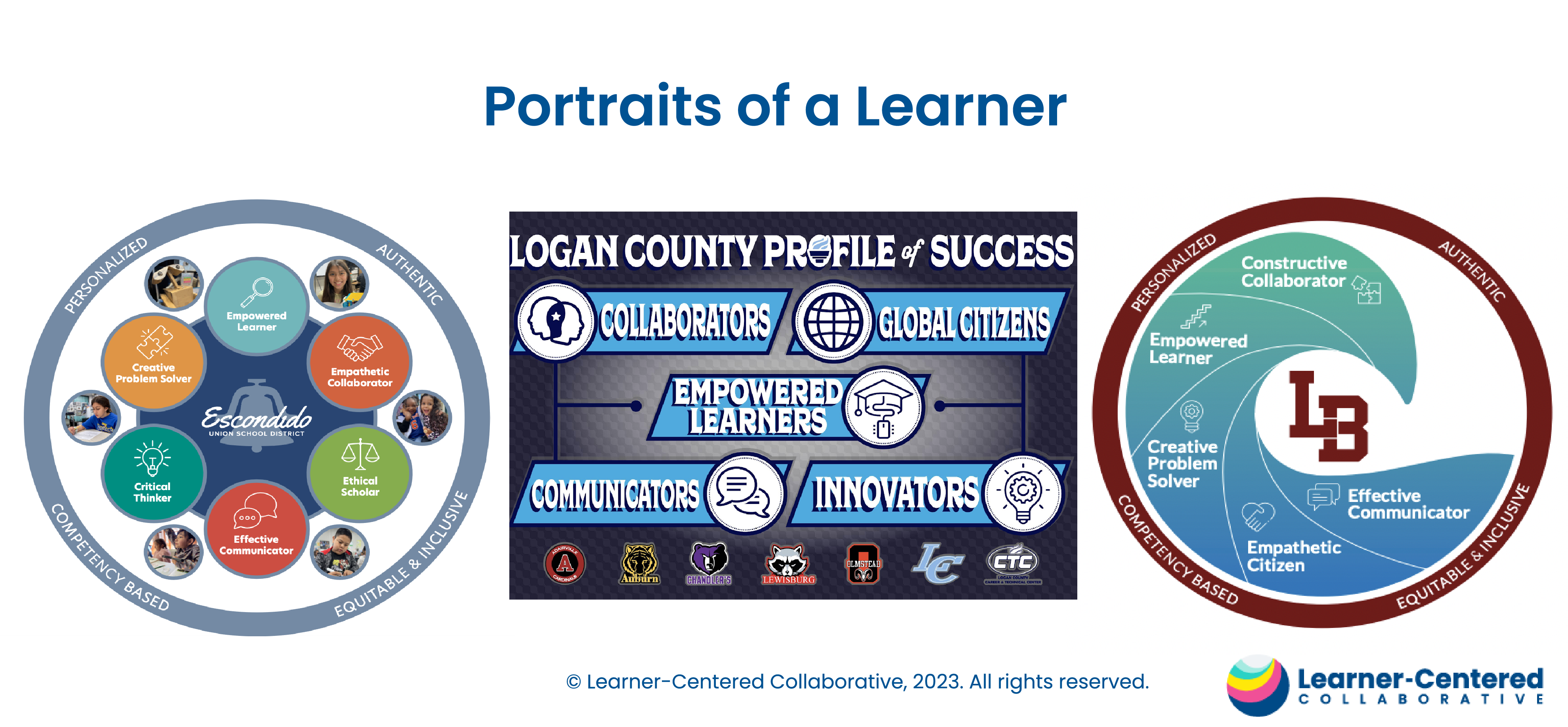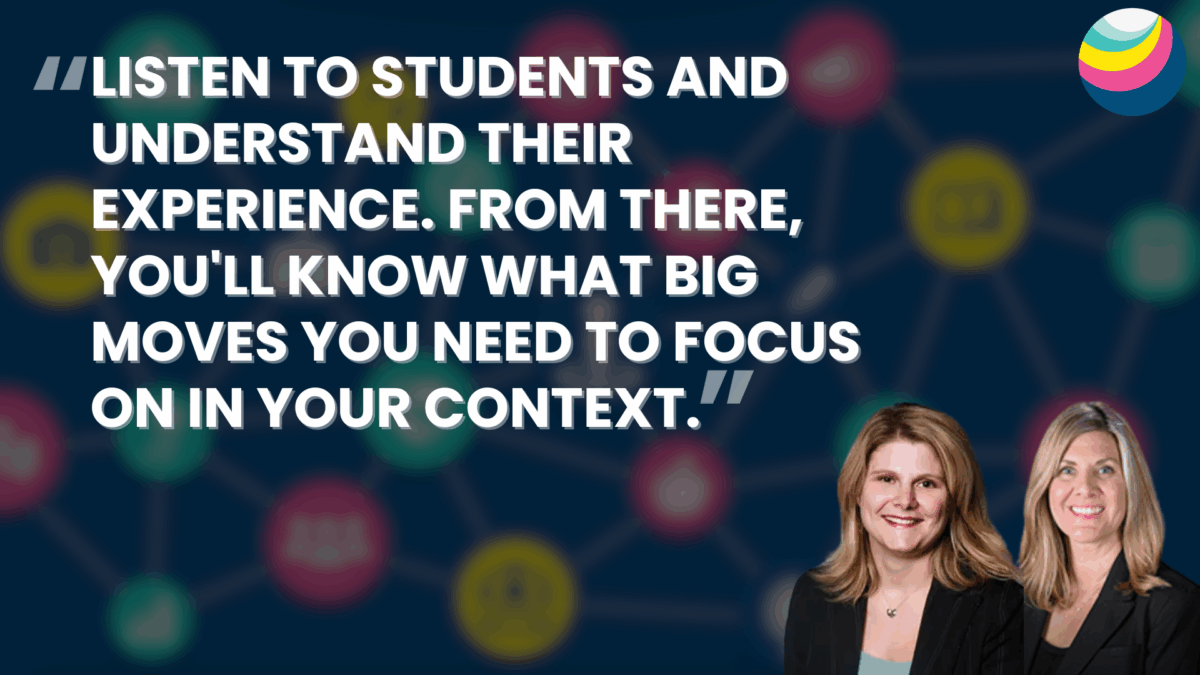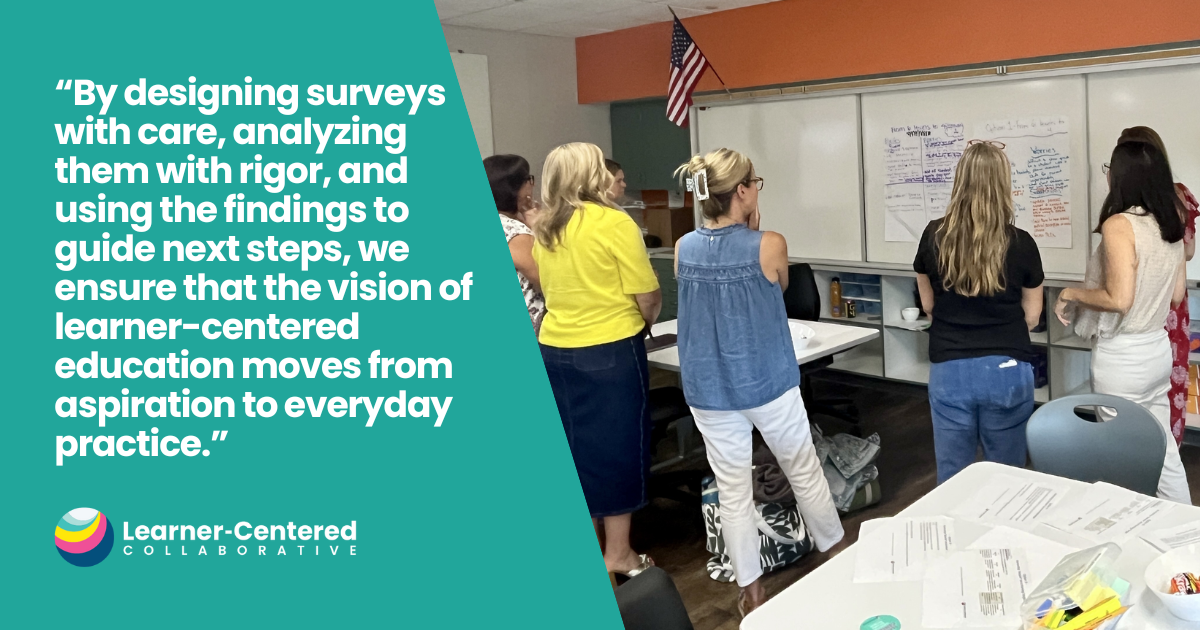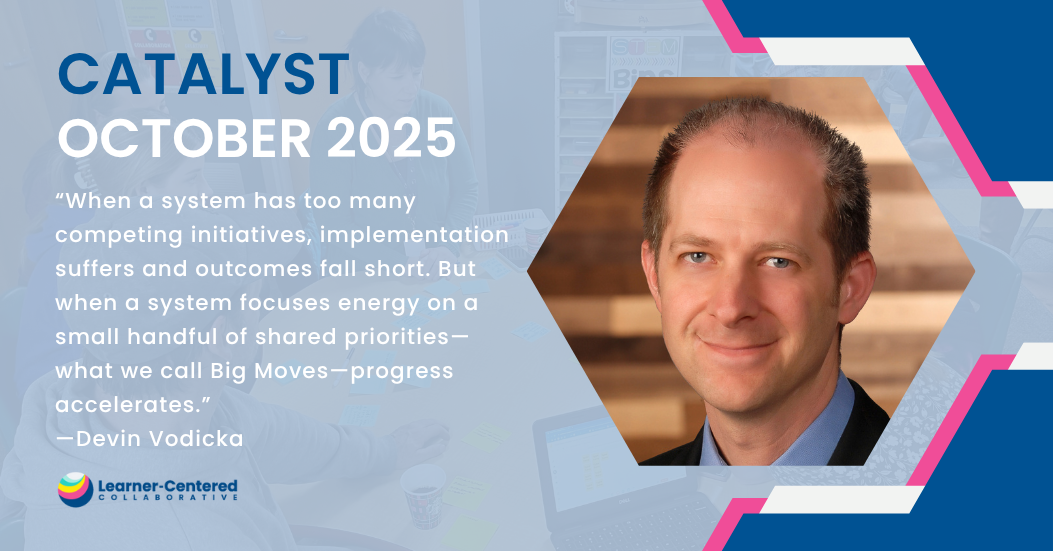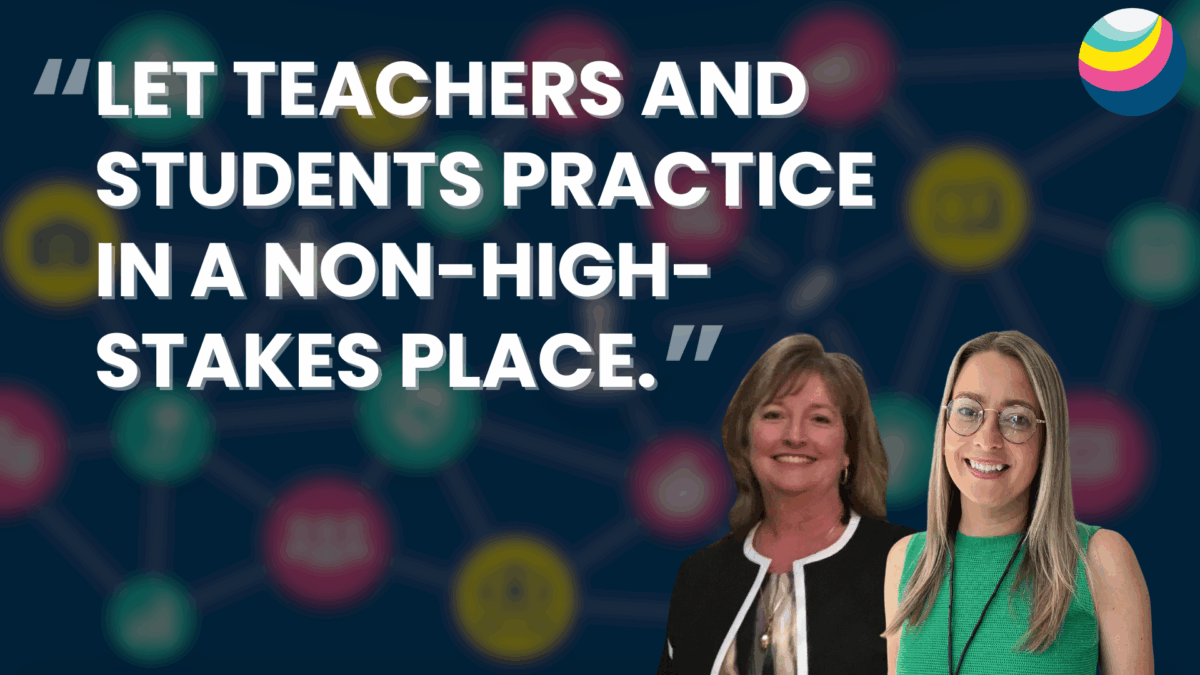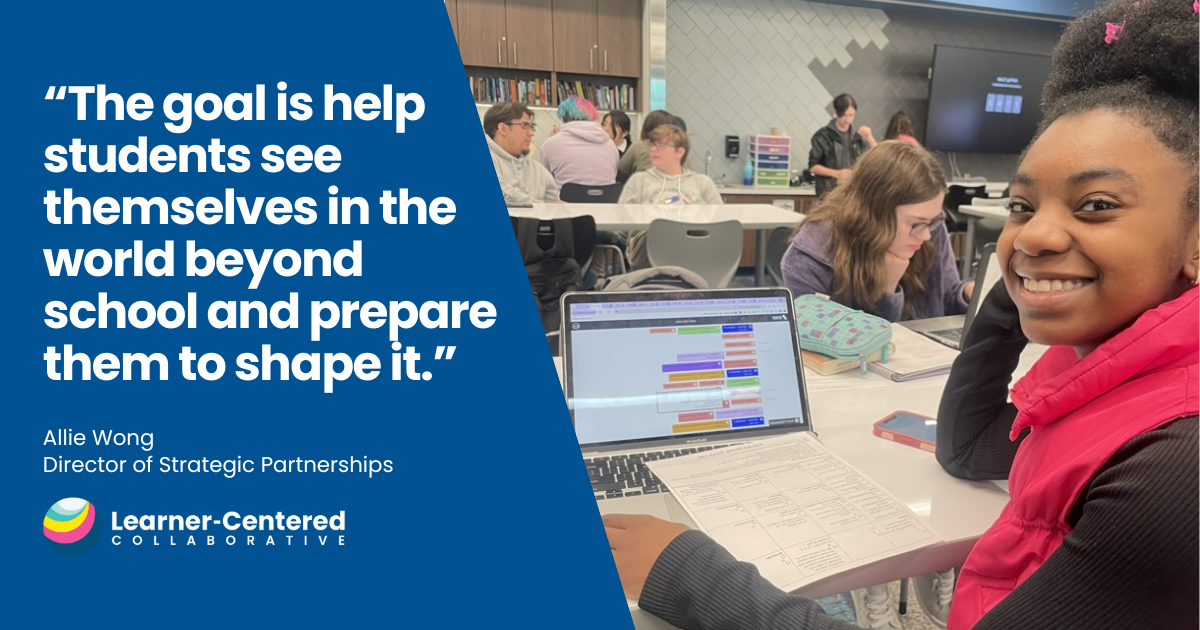Why Your Framework for the Future Needs These 4 Essential Elements
Why You Need a Framework for the Future
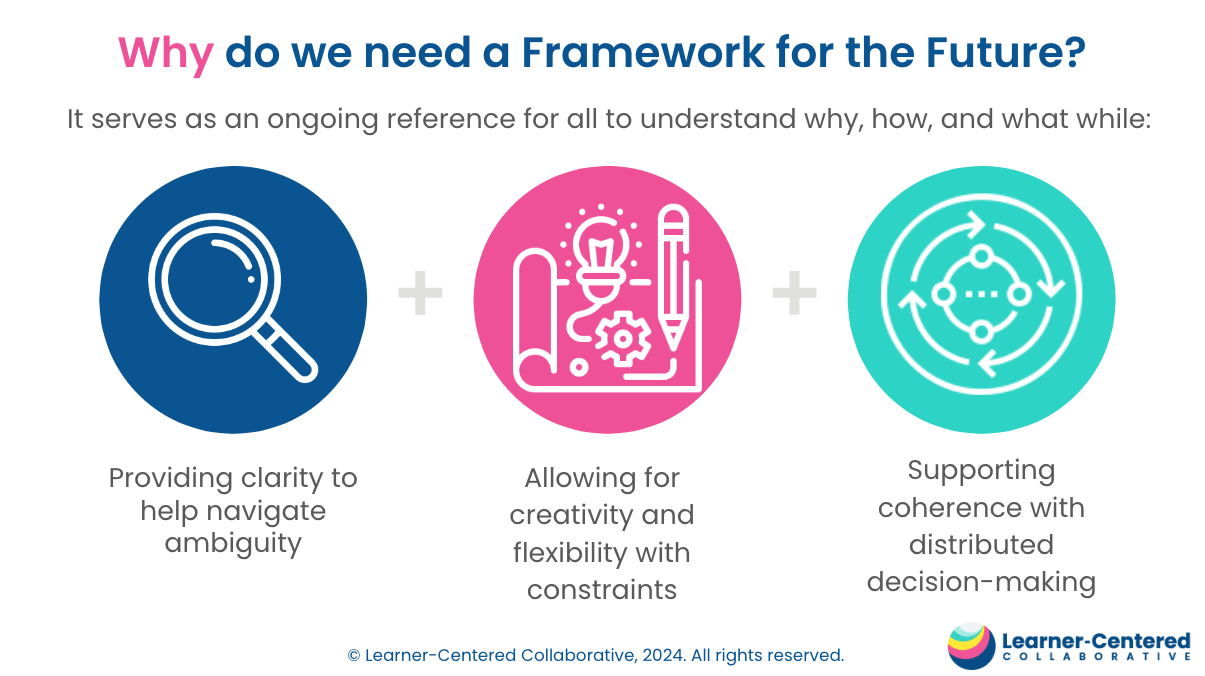
A Framework for the Future serves as an ongoing reference for all to understand the why, how, and what of the system’s vision. It provides clarity to help navigate ambiguity, allows for creativity and flexibility with constraints, and supports coherence and distributed decision-making.
As César Morales has written, a Framework for the Future “increases levels of collective efficacy by providing a shared understanding of the organization’s purpose, strengthening commitment to a common vision, and fortifying a strong sense of teamwork among all education partners” (2023).
Key components of a Framework for the Future include:
- Mission, Vision, and Values
- Portrait of a Learner
- Learning Model
- Blueprint
Each of these elements plays a crucial role in shaping a system’s learner-centered evolution.
Why You Need Mission, Vision, & Values Statements
A Mission, Vision, and Values are guiding statements that define the organization’s purpose and how all decisions will be made. Without a vision, the system has an unclear future goal and purpose. Without a mission, the system is unclear on what they do to get to that future goal. Without values, the system is unclear on how people should operate while making decisions and interacting together in working towards their vision. As Devin Vodicka wrote in Learner-Centered Leadership of Vista Unified School District’s process to rewrite their Mission, Vision, and Values statements, “it set the stage for the next five years in ways that I could not have imagined at the time” (2020).
At Encinitas Union School District, educators begin professional learning experiences by choosing a value such as Joy or Integrity that they will lean into during the session and are asked to reflect on how that value showed up in their work at the end of the session. These reflections are powerful ways to support the community in living the values as a way to collaborate effectively.
Wendy Fairon, Chief Executive Officer at CCDS, emphasizes the forward-looking impact of this process:
“Getting clear on who we are, what we do, and how we do it casts us forward into the future as well. We have considered expanding into a high school or replicating our K-8 and the foundational work to articulate our Framework for the Future gives us a clear north star of where and how to cast our future aspirations.”
By establishing these guiding statements, educational institutions create a robust foundation for growth, innovation, and coherent decision-making. They provide a shared language and purpose that aligns all stakeholders – learners, educators, and community members – toward a common goal.
Why You Need a Portrait of a Learner
A Portrait of a Learner articulates the whole-learner outcomes and competencies that are essential for all learners to develop. A Portrait of a Learner is a comprehensive and holistic representation of a school system’s (i.e state, district, school) desired outcomes based on their vision and can function as a promise to their community. By creating a Portrait of a Learner, systems can align their practices to a shared vision of success for every student. Moreover, these Portraits can help to expand the view of success beyond narrow academic measures and honor the unique identity, strengths, goals, and aspirations of each learner.
A Portrait of a Learner defines the knowledge, skills, and dispositions a community promises to support learners in developing throughout their time within the system and into their lives after. According to interviews with school leaders who have implemented Portraits of a Learner, there is a clearer direction and purpose for site leaders (Morales, 2024). Dr. John Thornton, Director of Student Services at Hampton Township School District, shared that their Portrait of a Talbot has “enabled educators to move beyond traditional metrics, focusing on deeper learning and the comprehensive development of each student’s academic, social, and emotional skills, preparing them for future challenges and opportunities.” (Thornton, as cited in Morales, 2024).
Why You Need a Learning Model
A Learning Model describes what learner-centered teaching and learning will look like to support learners in developing the Portrait outcomes and competencies. In order for educators to ensure that learners have opportunities to develop the outcomes defined by the community in the Portrait of a Learner, they must design learner-centered experiences that are aligned with desired outcomes. Defining these key educator practices, what we call educator competencies at Learner-Centered Collaborative, supports the entire system in understanding what teaching and learning will look like in a more learner-centered paradigm. They support educators in implementing instructional strategies and practices to support the Portrait of a Learner and the vision of the school or district. This level of clarity supports the day-to-day work of bringing the vision to life and can inform professional learning design, evaluation, classroom observation, and more to support educators in implementing a system’s learner-centered vision. One leader, when asked about the value of a defined learning model said, “I think this tells the staff what is most important for our community, and they feel empowered to work towards achieving those outcomes” (Morales, 2024).
Why You Need a Blueprint
A Blueprint, or Strategic Plan, outlines the strategic priorities and a 3-5 year plan for implementing learner-centered education. Part of this plan is defining a series of Big Moves that are the actions the system will take to reach the long-term vision. This level of clarity provides concrete action items related directly back to the Mission, Vision, Values, Portrait of a Learner and Learning Model. If those are seen as the strategic vision or future goal, the Strategic Plan is seen as the road map or the blueprint to that future state. It provides coherence and supports everyone in the system to take clear next steps towards implementing the vision.
Putting It All Together
By integrating these four elements, organizations create a comprehensive Framework for the Future that guides their transformation towards learner-centered education. This framework catalyzes change, builds coherence, and ensures all stakeholders are aligned in their efforts to create meaningful, lasting impact.
References
Morales, J. C. (2023). What Is a Framework for the Future and Why Do You Need One? Learner-Centered Collaborative. https://www.learnercentered.org/what-is-a-framework-for-the-future-and-why-do-you-need-one/
Morales, J.C. (2024). A Framework for the Future: Co-constructing a Learner-Centered Grammar of Schooling [Doctoral dissertation, University of Southern California].
Vodicka, D. (2020). Learner-Centered Leadership: A Blueprint for Transformational Change in Learning Communities. Impress.

